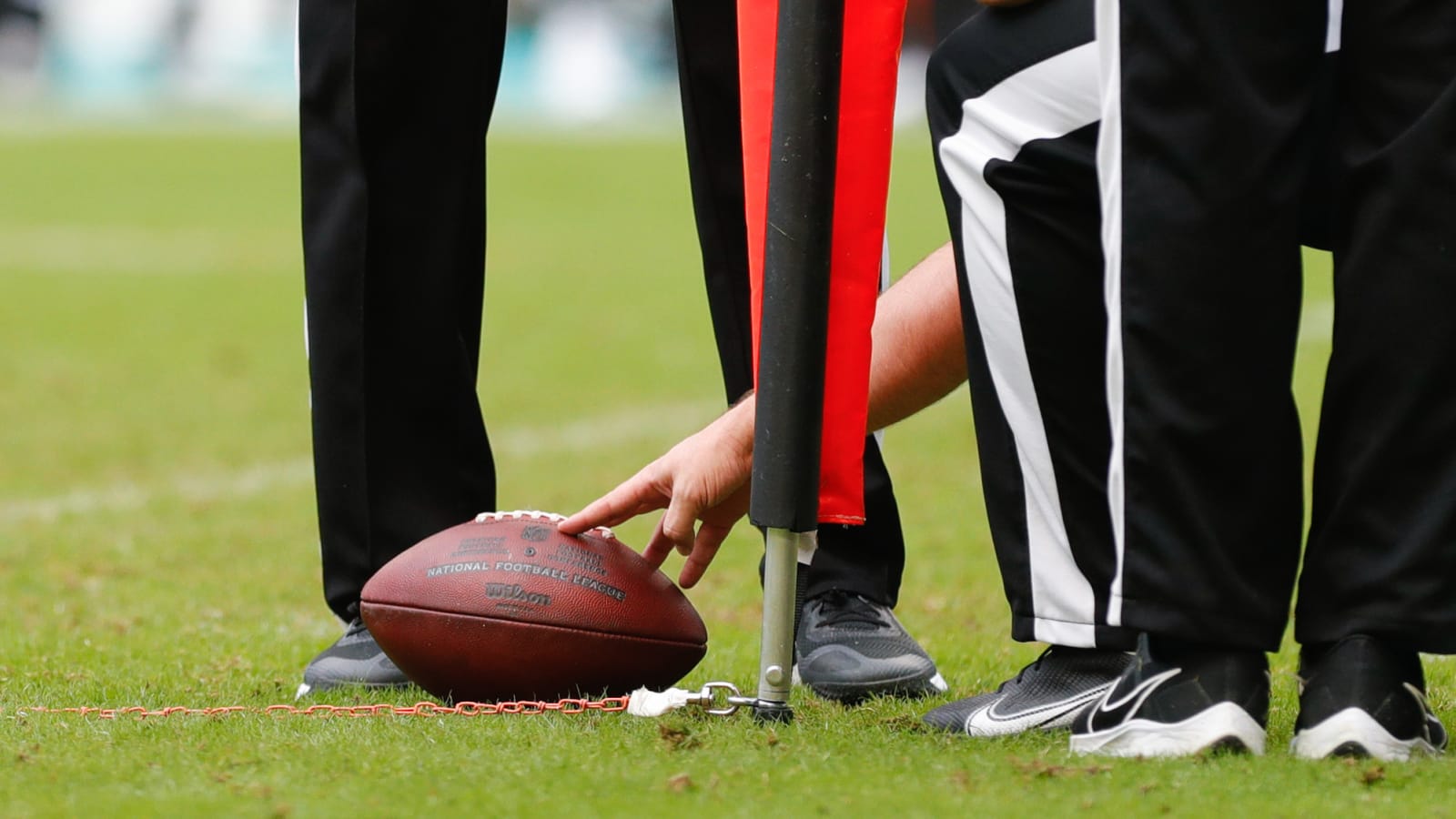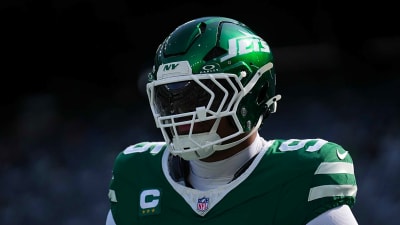
'Hawk-Eye' technology marks a new era for the NFL, still won't stop controversies
The next time a measurement is needed to determine a first down, it won't be the chain gang coming out to make the measurement — it won't even be a human.
At the NFL's spring owners meeting on Tuesday, the league announced Sony's "Hawk-Eye" virtual measurement system will be the primary method of measuring the distance between the spot of the ball and the line to gain moving forward. The sideline crew will be relegated to backups.
"Combining the art of officiating with Sony's trusted Hawk-Eye system is a healthy recipe for success in our commitment to raising the standards of accuracy, consistency and efficiency," Troy Vincent, executive vice president of football operations at the NFL, said in a press release. "Replay technology and data-driven insights from Sony's Hawk-Eye Innovations aid us in advancing our efforts toward the future of football."
This technology becoming the standard for the NFL marks a new era for football. The league has used "Hawk-Eye's" Synchronized Multi-Angle Replay technology since 2021 to combine and synchronize gameday footage to assist with replays being looked at in the NFL's command center. Still, officials haven't trusted the "Hawk-Eye" system with decision-making until now, and refs won't be completely shut out by it.
A referee is required to determine the spot of the ball before the "Hawk-Eye" system decides if the 10 yards for a first down have been gained. As the officials are notified of the outcome, real-time virtual recreations will be shown to the stadium and broadcast audience. According to the league, this process will take about 30 seconds, but save up to 40 seconds if the chain gang were to do it themselves.
While the "Hawk-Eye" system will hopefully make long football games more efficient, it probably won't stop officiating controversies.
Let's take the Buffalo Bills' failed 4th-and-1 quarterback sneak in the fourth quarter of last season's AFC Championship Game against the Kansas City Chiefs, for instance.
The Chiefs' defense stops them on fourth down!
— NFL (@NFL) January 27, 2025
: #BUFvsKC on CBS
: Stream on @NFLPlus and Paramount+ pic.twitter.com/VwGmEZ3IrW
After a scrum of players stopped Josh Allen, the down judge said Allen was short of the first down, while the line judge disagreed. Ultimately, the down judge determined the spot, resulting in a turnover on downs, which the Chiefs capitalized on to win the game, 32–29.
There was plenty of controversy then, as analysts and fans felt officials gave the Bills a bad spot. This led to more calls to automate these decisions and avoid human error altogether. However, the "Hawk-Eye" system is limited in determining the spot of the ball as it would need an unobstructed view, and most of the time, the ball is quite obstructed by players hitting each other.
So, in 2025, expect the refs to still make unpopular decisions on where the ball is spotted since the technology can't change that.
At the very least, measurements will be faster, and it's safe to say this is only the beginning of new technologies being used on the gridiron.
More must-reads:
- NFL owners approve expanded replay assist, amended OT format
- NFL's kickoff rule change nullifies main argument against tush push
- The 'NFL Passing YPG leaders' quiz
Breaking News
Trending News
Customize Your Newsletter
 +
+
Get the latest news and rumors, customized to your favorite sports and teams. Emailed daily. Always free!








